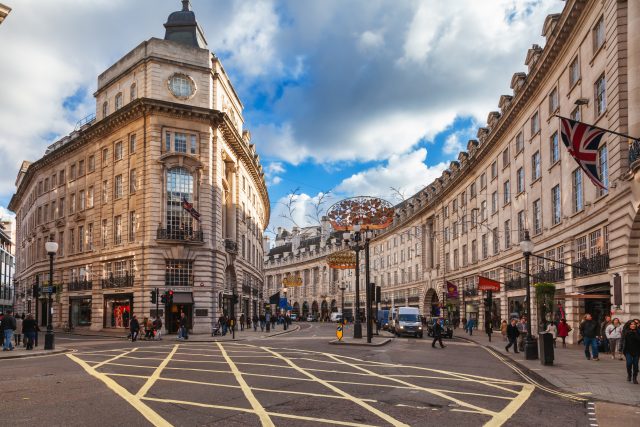This website uses cookies so that we can provide you with the best user experience possible. Cookie information is stored in your browser and performs functions such as recognising you when you return to our website and helping our team to understand which sections of the website you find most interesting and useful.
W1 still leads the way with London restaurant openings
London saw 137 restaurants open in the first half of this year, and almost a fifth of these were in W1 postcodes, according to a new study.

The 137 new openings in H1 2024 (the year to 31 July) is 6% above the figure for the equivalent figure last year (129), according to data compiled by restaurant media outlet Hot Dinners and analysed by real estate consultancy Robert Irving Burns.
26 (19%) of these new openings were in W1, which includes the areas of Mayfair, Fitzrovia, Marylebone and Soho. In second place was EC (Shoreditch, Hoxton, and The City), with 14 (10%), and south of the river, SE1 (Borough, London Bridge, and the South Bank) came in third with 10 new openings in this six month period (7%). It should be noted that 71 openings, equivalent to a slim majority of 52%, were categorised as occurring in post codes in the ‘Other’ category.
However, while the London restaurant scene is still expanding, the number of high profile closures has also more than doubled, going from 14 in H1 2023 to 33 in H1 2024. Prominent Central London losses during this period include Galvin at Windows, Mere, and Le Gavroche.
Indeed, the 19% proportion of new openings that were in the glitzy, glamorous setting of W1 in H1 2024 was actually down year-on-year from 26%.
Antony Antoniou, CEO of Robert Irving Burns, said that price has been in a big factor in this decline: “London’s restaurant scene has proven remarkably resilient in the face of economic headwinds, which has sustained demand for Grade A commercial space in Prime Central areas such as Mayfair and Marylebone.”
“However,” he continued, “the majority of new openings (52%) have been outside of the key premium hotspots such as Mayfair. The high rents in these PCL locations are pricing out many of the new restaurants and leading businesses to pursue a different strategy, with some targeting the more residential working from home and weekend trade.”
The area that has seen the most notable rise is EC, which is home to 10% of new London restaurant openings, compared to 4% in H1 2023.
“The advantages of being located in a secondary location, such as cheaper rent per square foot and fewer competitors, are often outweighed by the downsides of much lower footfall and lack of visibility, due to lack of proximity to shops, tourist attractions and offices,” Antoniou argued. “The success of restaurants in outer locations will be down to their location in these places.”
These findings may be of particular interest to celebrity chef Rick Stein, who is seeking a Central London location for a new restaurant he plans to open next year.
Related news
Simon Rogan to reopen Hong Kong restaurant

